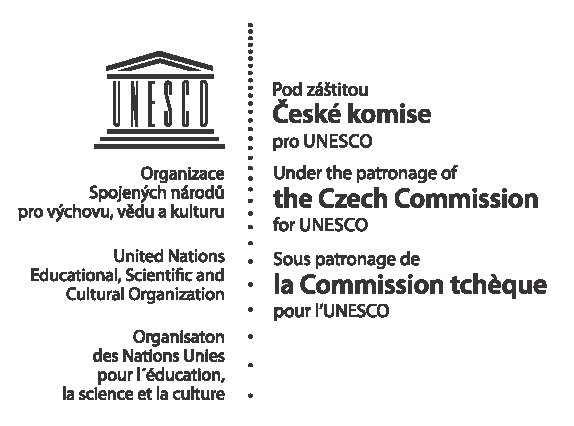Invited speakers
 Vladimir E. Bondybey
Vladimir E. Bondybey
I was born in Prague on January 4th, 1940. After completing high school, my applications to various department of the Charles University (Medicine, Law), were repeatedly turned down. I therefore spent two years in a factory working in testing new diesel-electric locomotives and then in 1961 was drafted into the army where I spent further two years as a driver of the T-54 tanks. Shortly before the end of my military service I was, after a personal intervention of my commanding officer on my behalf, accepted by the Faculty of Natural Sciences. During my chemistry studies there I have earned my living as an interpreter and translator, and also started research studying Raman Spectra with Dr. Bohuslav Strauch. After three years I managed to obtain a scholarship at the University of Rostock in Eastern Germany, where I studied the properties and reactions of organo-silicon compounds. I wrote a thesis on this research and after passing the final exams was awarded the degree of “Diplomchemiker”. After returning to Prague, I continued as an Assistant in the Department of Inorganic chemistry. Besides teaching, I have also analyzed the spectra of some of the silanes I have synthesized in Rostock, and after passing some further exams and writing a thesis on this research I received the R.N.Dr degree.
With the advice and help of visitors from the University of North Carolina at Chappel Hill I have met through my work as an interpreter, I wrote a letter to their institution, as well as to the Harvard University and Berkeley, enquiring about the possibilities of a financial support. After receiving offers from all three institutions, I first selected Harvard, but later decided on Berkeley. I have arrived in Berkeley In December of 1968, and joined the group of Professor George C. Pimentel. One of his projects at the time involved development of a new method for studies of reactive and usually very short lived species, such as ions or free radicals. In this method, for which he coined the term “matrix isolation”, these transient species are frozen in an inert solid – usually rare gas or nitrogen, where they can be leisurely studied, e.g. by IR spectroscopy. I have investigated a number of such species, complementing the experiment with theoretical ab-initio computations. After about two years at Berkeley, one of former Pimentel’s students needed a postdoctoral research associate and so I compiled my thesis and obtained my PhD degree early in 1971. I then moved to Corvallis, Oregon, where we have in the following year with Prof. Joe Nibler succeeded in recording the first Raman spectra of several matrix isolated molecules, e.g. diazene, HNNH, in solid neon and argon. We have also studied the laser induced fluorescence of several species, for instance C2 and C2-. After some 10 months in Oregon, I was rather unexpectedly offered a job at the Bell Telephone Laboratories, and moved again, to Murray Hill, New Jersey.
At Bell Labs I have spent some 13 years and continued, besides working also in various other areas, matrix isolation studies, using mainly fluorescence excited by tunable pulsed lasers. Among the numerous problems we investigated were e.g. the rates and mechanism of nonradiative relaxation and energy redistribution processes in molecules, a detailed analysis of the Jahn-Teller effect in symmetrically substituted benzene molecules, and many other. During my time at Bell Labs I have also developed an efficient source for producing clusters by laser vaporization of solid metals, alloys or other materials, followed their cooling by supersonic expansion of a suitable carrier gas (e.g. Ne or Ar). The species produced could again be studied by laser induced fluorescence, either in the matrix, or in the gas phase. In this way we could identify and characterize a number of metal dimers and clusters, e.g. Pb2, Sn2, Cu3, SiC2, Be2, Al2, CuAl, and many others. For my work at Bell Labs I was named a “Distinguished Member of Technical Staff”
After some 13 years, I have suddenly received several job offers as a professor from several Universities, e.g. Emory in Atlanta, Irvine in California, and Ohio State University (OSU). In 1986 I moved to Columbus, Ohio, where I taught courses on physical chemistry and spectroscopy, and continued my research. Two years later I received, and after a considerable hesitation accepted, an offer from the Technical University of Munich. There I was again teaching courses in Physical Chemistry and Spectroscopy. Besides continuing spectroscopic studies using a variety of pulsed and CW lasers, I also obtained also a high resolution Fourier Transform Mass Spectrometer (FT-MS). By coupling our cluster sources to this spectrometer, we could generate and study a variety of clusters in the gas phase. As an example, we could study adsorption and reactions of various molecules on the surface of transition metal clusters – interesting models for chemical catalysis, or generate large water clusters such as H+(H2O)n or OH-(H2O)n, with up to about n=250, and study their properties and reactions.
In summary, my career over the years is reminiscent of a random walk, involving many different locations on at least two different continents, studying a large number of problems, and using a variety of spectroscopic techniques. In my talk I will try to give at least a superficial overview of the techniques used, and discus briefly some of the more important results and insights we have obtained from them.




